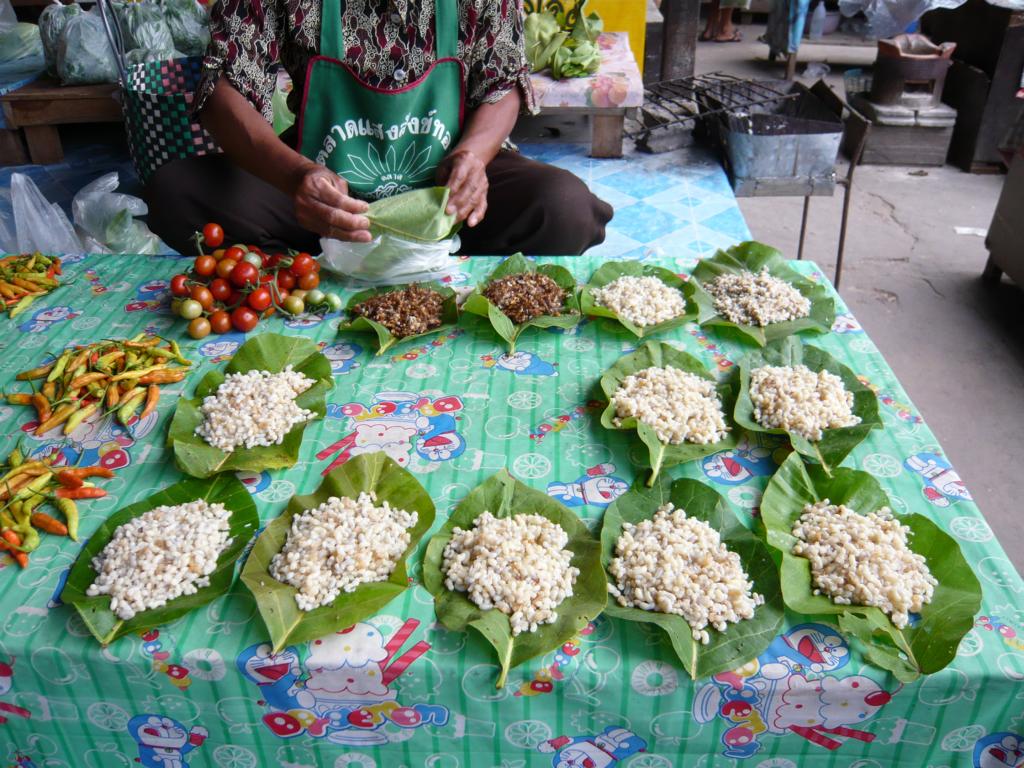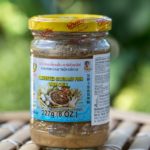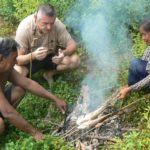Weaver ants of the genus Oecophylla consist of two different species. One species is Oecophylla longinoda, which occurs in equatorial, tropical African regions. The other species is Oecophylla smaragdina, distributed in tropical Asia and Australia. Both of them are also commonly called either ‘Red ants’, ‘Green ants’, or ‘Tailor ants’ in various local languages.


The above pictures of the Weaver ant nest of the species Oecophylla longinoda were taken at False Bay, iSimangaliso Wetland Park (former name: Greater St. Lucia Wetland Park), KwaZulu-Natal, South Africa. These pictures clearly show the leaves, which are still alive and glued together with larvae silk.
There is always not one nest on a tree, but there is more. The queen’s nest is located at the best-covered site and most inaccessible location. Within there, she is laying more than one hundred eggs per day. At this nest, she will be attended to by minor working ants, who transport the fertilized eggs to other nests around where they will be tended to.
Unique skills of Weaver ants
Weaver ants can also bridge gaps between leaves of many centimeters/few inches by walking up to a leaf edge and stiffening the body. Another ant will walk over this stiff body and do the same. And so on. Until the opposite leaf edge is reached, and via this bridge, they will pull together both ends as much as physically possible. Major workers (the caste of large-bodied working ants) will come in with larvae in their pincers and use them like glue guns.
These ants are very ferocious and will kill and eat all other ants, insects, gastropods, and other protein providers within their reach. Additionally to protein, they need sugar. They mainly get it from scale insects, which they are even ‘farming’. They move them to young shoots to feed them, milk them, and – if there are too many of them – eat them.
The Oecophylla genus is—together with leaf-cutting ants—the most sociable and intelligent genus of ants. When wandering around and finding food, they lay pheromone trails and can communicate to fellow ants the type and location of food by touching different points on the other ants’ bodies.
Weaver ants for human food
In Africa, Weaver ants are not used as food for humans, but they are used for biological pest control of fruit trees, preferably on Mango- and Avocado trees. An interesting overview of this application can be found here.
However, in Thailand and the Philippines, humans will eat weaver ant larvae, pupae, virgin queens, and imagoes. They are in high demand and are locally called ‘Mot Daeng’ (red ants) in Thailand. Collecting starts in January. The main harvesting time is the dry months from February to April. In May, harvesting taper off.
Collection technique of Weaver ant brood

Picture: Ant brood collectors in Indonesia have stamina and patience and do not perceive the ants’ bites as a nuisance; © Van Mele, P. & Cuc, N. & Seguni, Z. & Camara, K. & Offenberg, J. (2009). Link see here.
The collection starts in the early morning, when the ants are least active, and lasts until midday. A mesh net is attached to a 6-10 m long bamboo pole with a pointed tip. The collector pokes and pierces the ant’s leaf nest, and the brood and other ants will fall out of the nest and into the net. To avoid getting bitten by the ants, the handle of the bamboo pole will be dusted with very fine cassava flour. And also, the gum boots, which the collector often wears, and the hands are dusted with that kind of flour. This eliminates the ‘grip’ of the ant’s feet on any surface, and they will evade without taking brood with them.
Further handling of Weaver ant brood
After lowering the collection basket, cassava flour will be sprinkled into the mesh net. A branch or twig will be put into the net so that the adult ants can evade without the brood. Thereafter, the brood will be cleaned and classified into the various development stages in a water bowl. After that, it will be kept either in a refrigerator or stored in water at ambient temperature. In this way, larvae and pupae can be kept fresh for up to 12 hours from the time of collection.

Lessons learned about Weaver ants:
- Weaver ants and their brood are not consumed as human food in Africa. They are mainly used for biological insect control at mango and avocado plantations.
- However, in Northern- and North-Eastern Thailand, Weaver ant brood is a cherished food for humans.
- In Indonesia, the Weaver ant brood is called ‘Kroto’ and is used as luxury feed for songbirds and as fishing bait.
.




